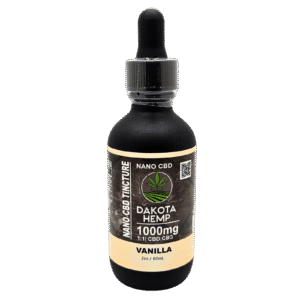If your backyard has become a minefield of prickly weeds, you’re not alone. Many homeowners deal with grass burrs, also known as sticker plants, which can make walking barefoot or letting your pets run free a painful experience. These tough weeds don’t just hurt—they spread fast and ruin the look and feel of your lawn.
To make your yard safe for pets and more enjoyable for everyone, grass burr removal is a must. This guide will walk you through simple, effective steps to eliminate these pesky weeds and prevent them from coming back.
What Are Grass Burrs and Why Are They a Problem?
Grass burrs are tough, spiny seed pods that attach to anything they touch. They thrive in dry, compacted soil and are commonly found in Southern and Western regions of the U.S. The most annoying part? These weeds grow fast and their seeds spread like wildfire.
For pet owners, weed burr removal is especially important. The sharp burrs can stick to your dog’s paws, ears, and fur, causing pain and possible infection. Plus, once sticker burr plants invade your lawn, they can be difficult to get rid of without proper action.
How Sticker Burr Plants Spread Across Your Yard
Sticker burr plants reproduce through seeds, and each burr can carry several. Once a plant matures, the burrs drop to the ground or stick to shoes, pets, or lawn equipment. This quick spread can turn a few plants into a full-blown infestation in just one season.
Keeping your lawn healthy and clean is key to stopping this spread. Proper grass burr removal stops the cycle and helps protect your yard from future invasions.
Early Signs of Grass Burr Infestation
Before your lawn is taken over, there are early clues that burrs are beginning to grow:
- Thin or bare patches in your grass
- Yellowing or dry spots during hot months
- Small, spiky seed heads forming near the soil
If you see these signs, act quickly. The earlier you start, the easier the process of weed burr removal becomes.
Step-by-Step Guide to Weed Burr Removal
Removing grass burrs requires patience and the right tools. Here’s how to do it effectively:
1. Mow at the Right Height
Keep your grass a bit taller than usual (around 3 inches). Taller grass shades the soil and makes it harder for burr seeds to germinate.
2. Water Deeply and Infrequently
Sticker plants thrive in dry soil. Water your lawn deeply once or twice a week to keep it healthy and discourage burr growth.
3. Hand Pull Where Possible
If the infestation is small, wear gloves and pull the burrs by hand. Be sure to remove the roots to prevent regrowth.
4. Use a Weed Popper Tool
For larger areas, a weed popper tool helps remove burrs without disturbing too much soil.
5. Apply a Pre-Emergent Herbicide
Use a pre-emergent in early spring to stop seeds from sprouting. Be sure it’s safe for pets.
6. Spot Treat with Post-Emergent Herbicide
Use a targeted herbicide for visible sticker burr plants. Choose a pet-safe formula to avoid harm to animals.
Lawn Care Tips to Prevent Sticker Burr Plants
Once you’ve removed grass burrs, it’s time to stop them from returning. Follow these tips to keep your yard burr-free:
- Fertilize: A thick lawn chokes out burrs. Use a nitrogen-rich fertilizer to encourage dense grass growth.
- Aerate: Break up compacted soil to improve water and nutrient absorption.
- Overseed: Add more grass seed to bare spots to reduce open space for weeds to grow.
- Rake Regularly: Remove fallen burrs before they take root.
By combining grass burr removal with ongoing lawn care, you reduce the risk of another burr invasion.
Common Mistakes to Avoid
Many homeowners try quick fixes that make the problem worse. Here are common errors:
- Skipping pre-emergents: These prevent new sticker burr plants from growing.
- Mowing too short: Short grass allows sunlight to reach weed seeds.
- Using the wrong herbicide: Not all products work on burrs, and some harm your lawn.
- Ignoring seasonal timing: Burrs are best tackled in early spring and late summer.
Avoid these mistakes to make your weed burr removal efforts more effective.
Pet Safety and Burr-Free Yards
Your pets deserve a yard that’s safe to play in. Sticker plants can cause serious discomfort to animals, especially dogs with long fur or sensitive paws.
Use pet-safe herbicides, and always rinse your pet’s paws after outdoor play in a recently treated area. You can even train dogs to avoid certain zones while treatment takes effect.
With proper grass burr removal, you can ensure a yard that’s not just beautiful but also safe and stress-free for pets.
Final Tips for Long-Term Burr Control
Consistency is key. Regular mowing, watering, and inspection will prevent a new crop of burrs from forming. Even after you’ve achieved a clean yard, keep up with pre-emergent treatments and healthy lawn practices.
Sticker burr plants can reappear, especially after heavy rains or heatwaves. Staying one step ahead is the smartest way to keep your yard burr-free. That’s why weed burr removal should be a routine part of your lawn care schedule.
Conclusion
A pet-friendly yard starts with smart, effective grass burr removal. Burrs not only hurt—they spread quickly and take over healthy lawns. With a mix of hands-on techniques and chemical treatments, you can reclaim your lawn from sticker plants. Regular upkeep, proper mowing, and fertilization are your best defense. Don’t let these prickly weeds take over your yard or harm your pets. Take action today and enjoy a safer, greener space year-round.
Say goodbye to painful weeds—start your grass burr removal plan today and give your pets a clean, comfortable place to play. Your lawn will thank you!

